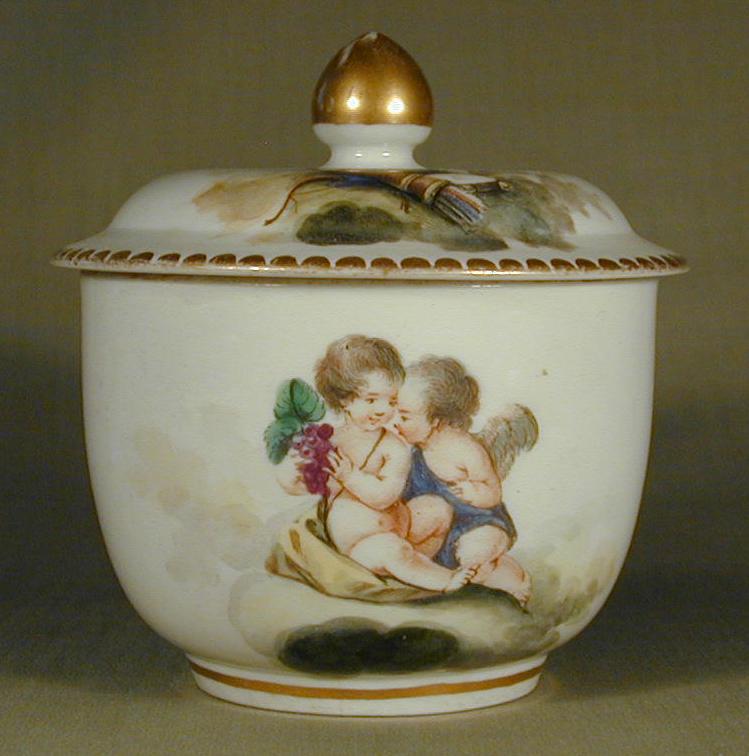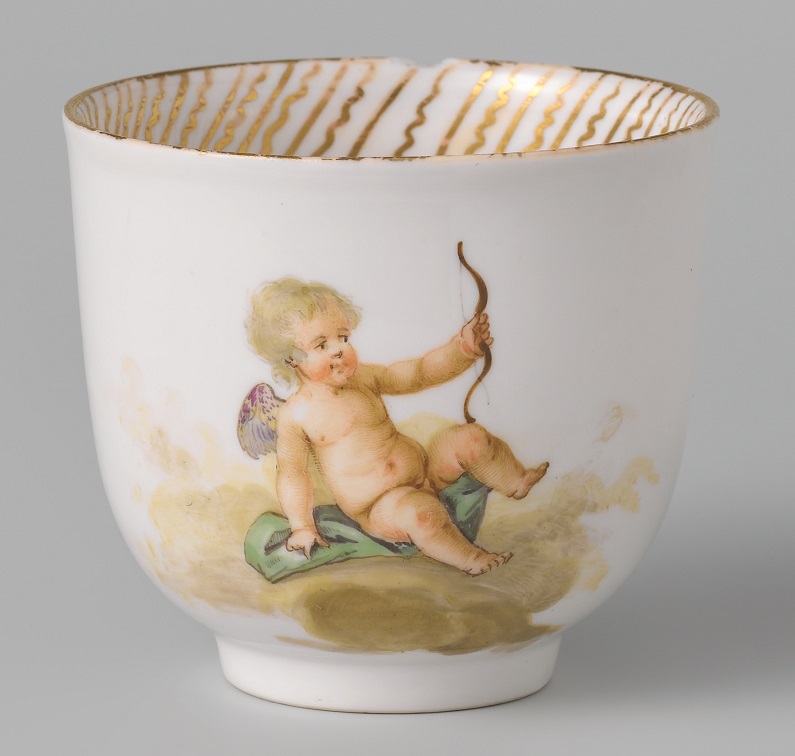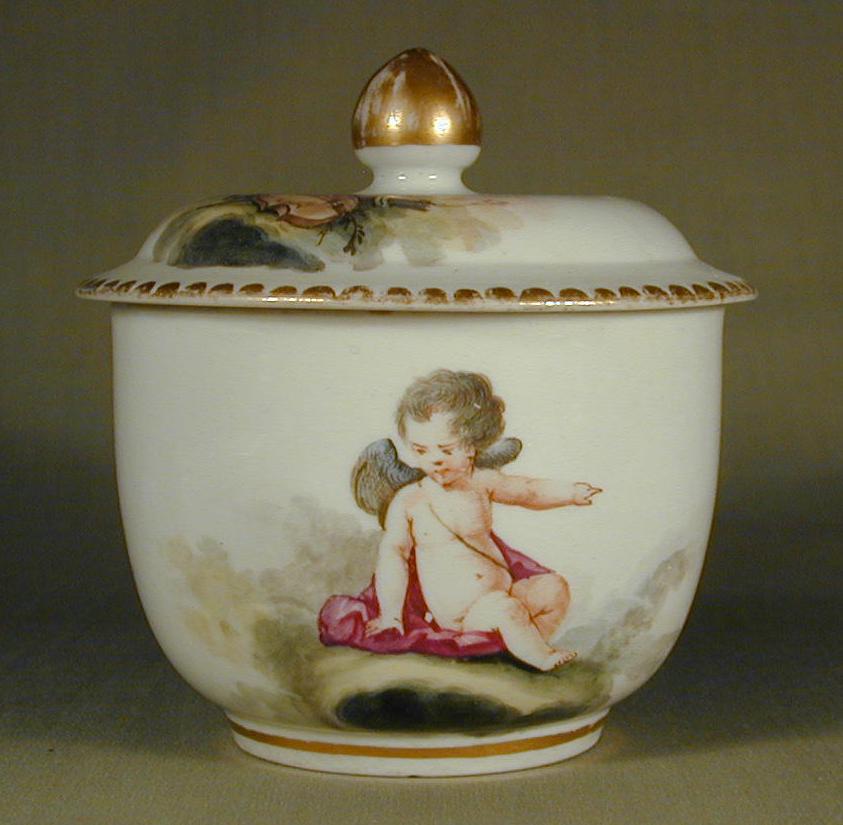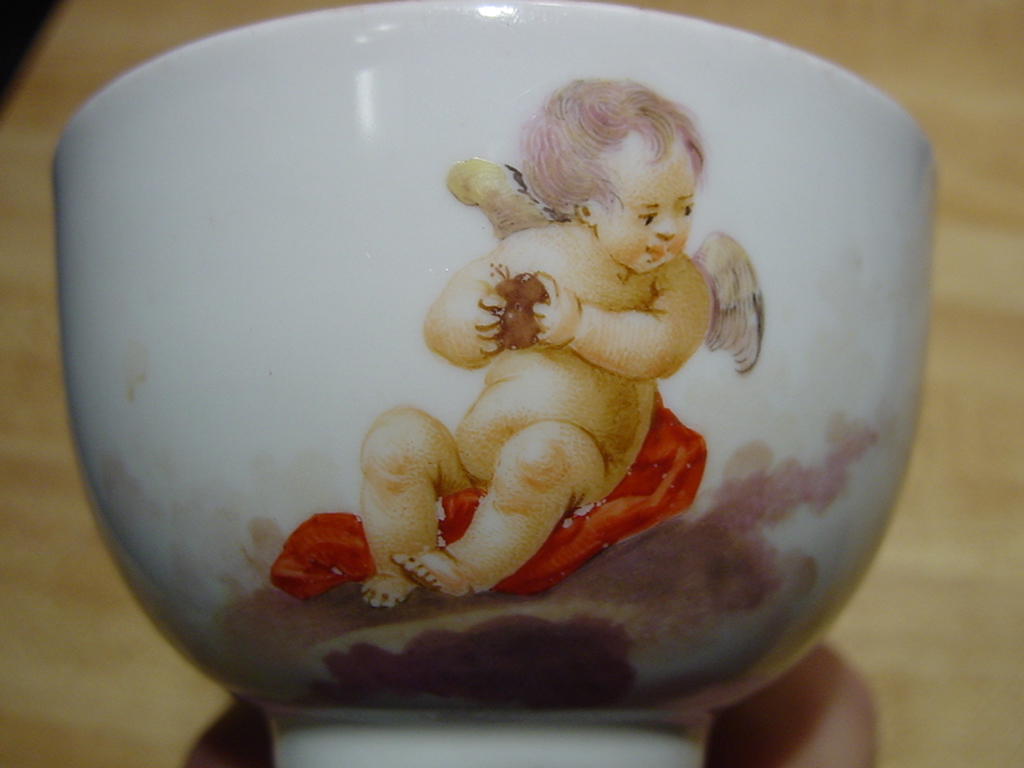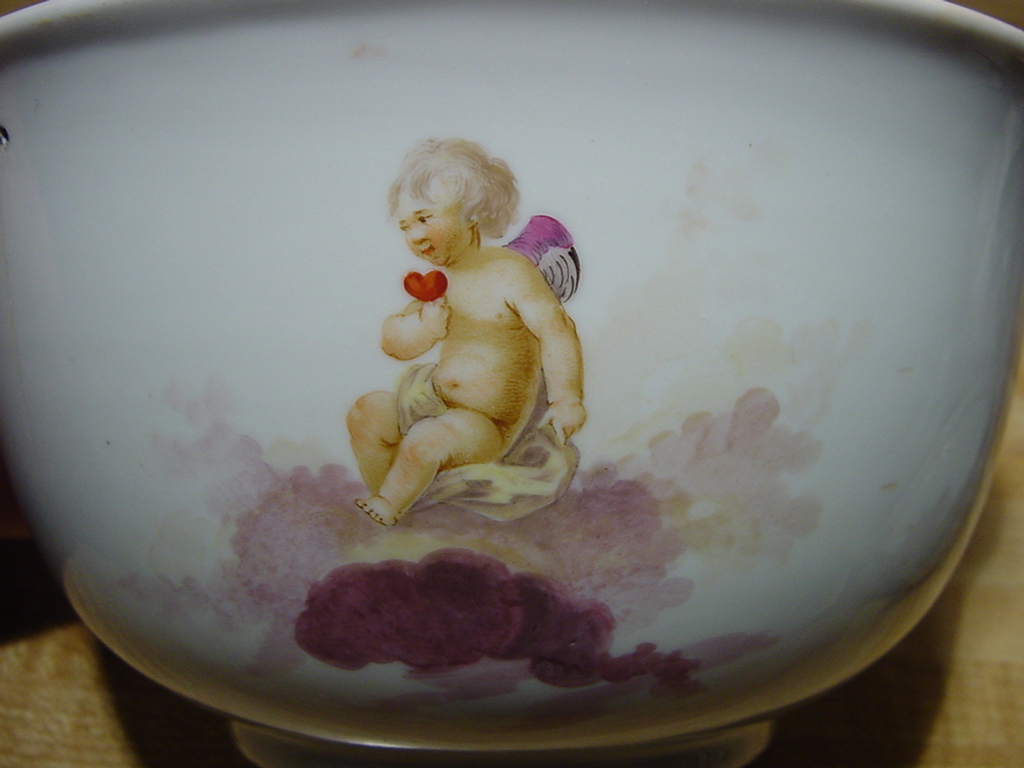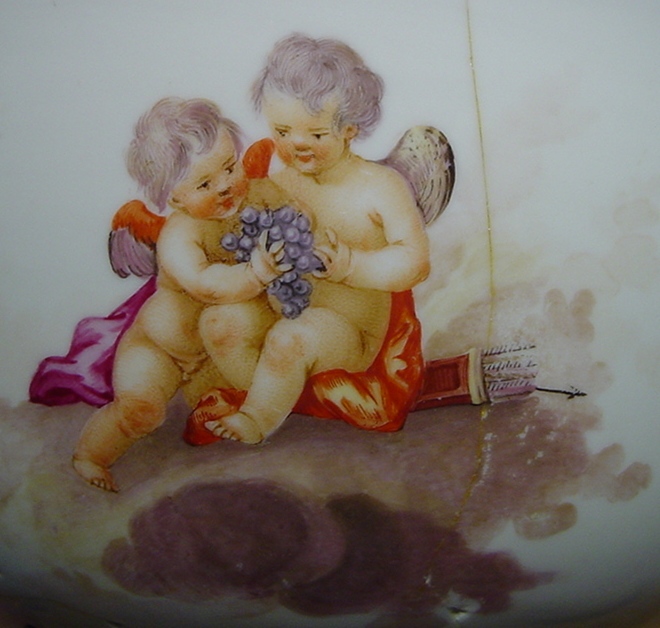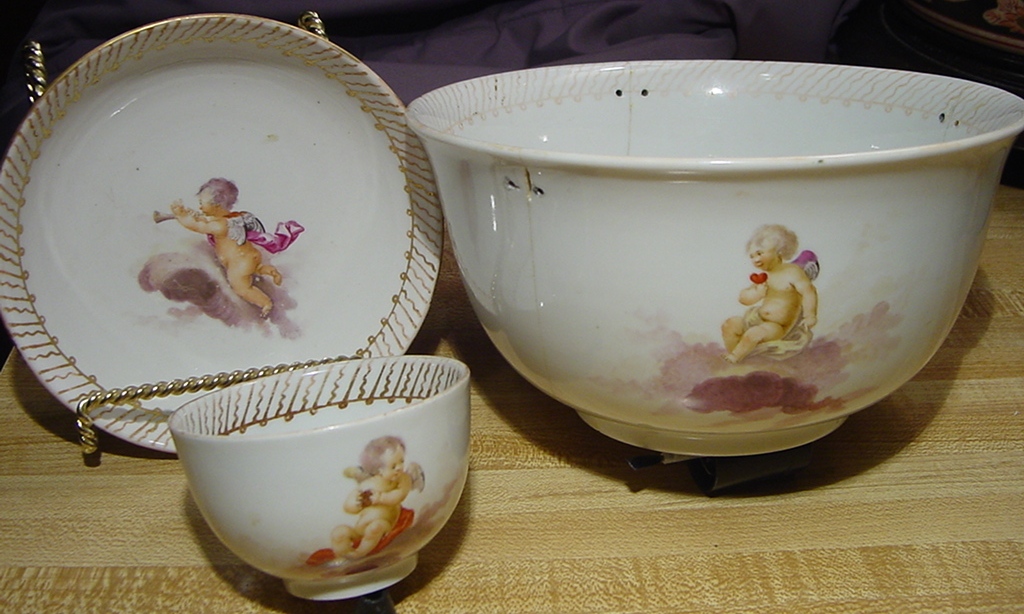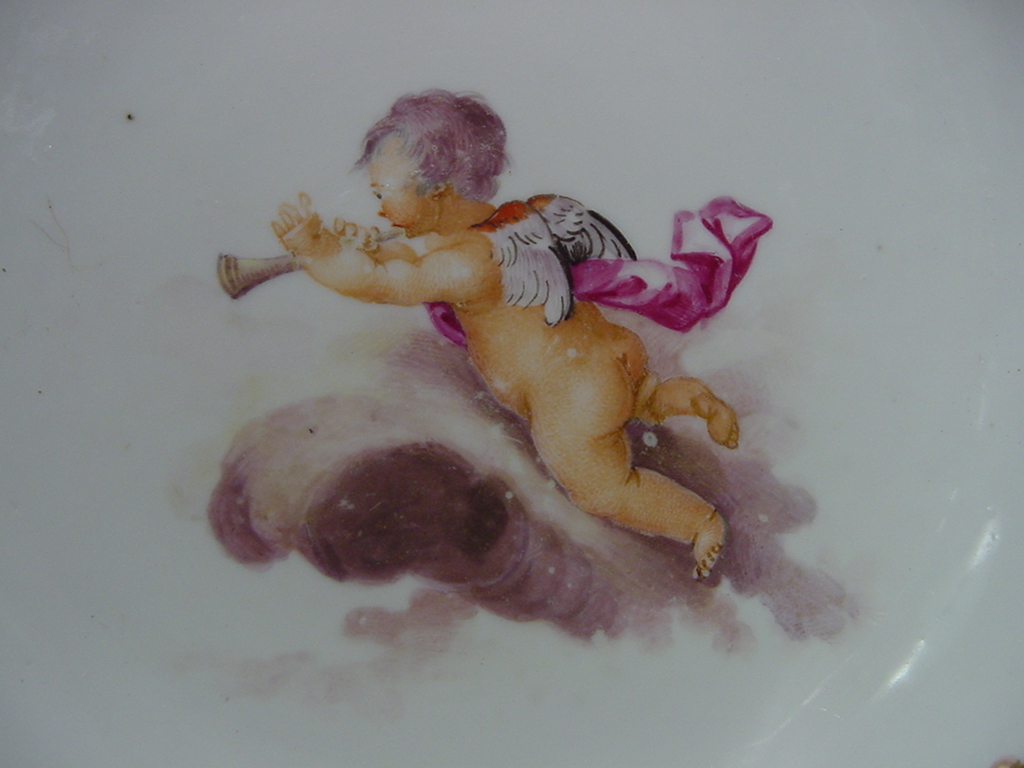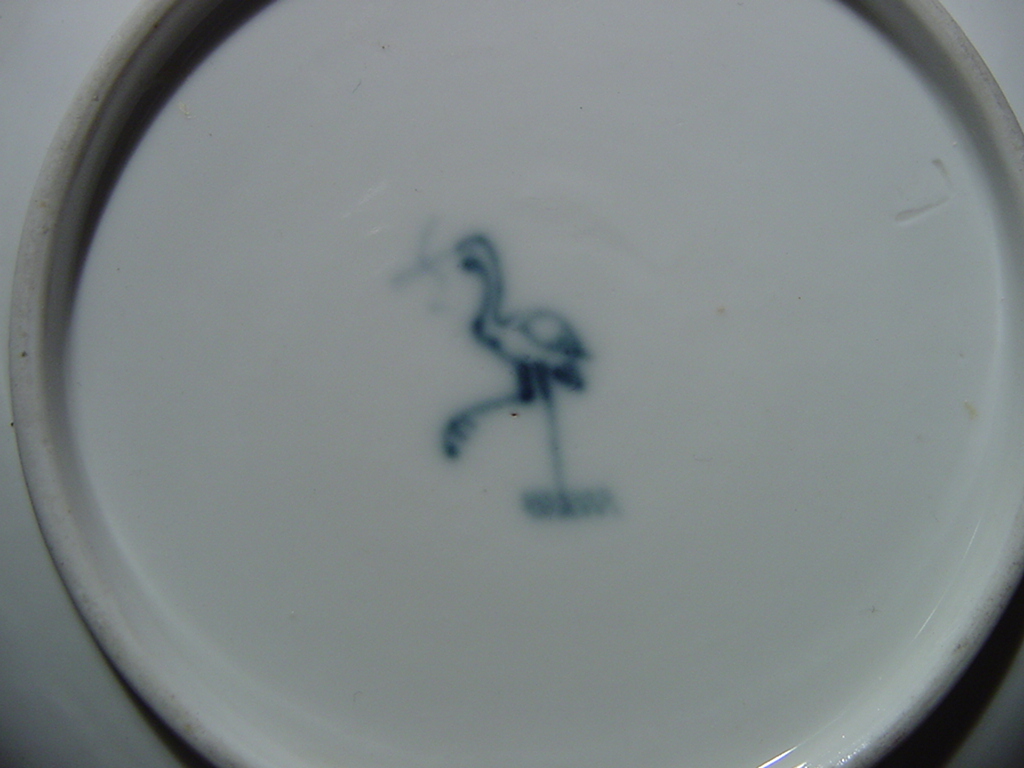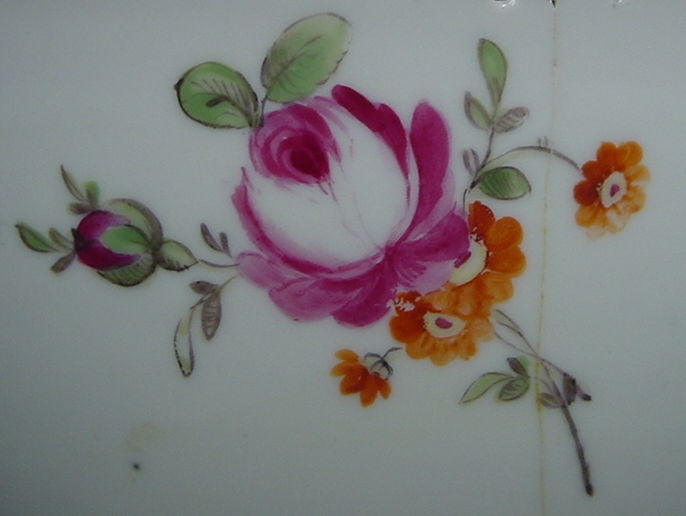c. 1785- 1790, decorated by Fidelle Duvivier.
H 10.5 cm. Private collection. Photo: Pat Preller. (See also 1b)
Fidelle Duvivier decorated porcelain with putti (also variously called cupids or cherubs) at every manufactory where he worked – at Derby, Sceaux, Loosdrecht, and New Hall (1a,b). Most were painted in puce camaïeu, and some of his finest examples are found on Loosdrecht porcelain (as shown in my book). But while in the Netherlands he also painted a few of these ethereal beings on Ansbach porcelain – for the Lyncker family of The Hague.(i)
1b Reverse side of the New Hall covered sugar bowl (1a). Private collection. Photo: Pat Preller.
Duvivier appears to have worked only briefly for the Lynckers, at some point after Anton Lyncker’s death in 1781 when his widow was running the business. Or, it may have been after his own employer at Loosdrecht, Rev. Joannes de Mol, died in November 1782 and Duvivier needed to look for extra work and income. As his name has not turned up in surviving city records as a foreigner residing in The Hague during that time, he may have made more than one journey from Loosdrecht to carry out his work there.(ii)
The Lynckers had hired foreign skilled painters to decorate the porcelain that they imported from Tournai (soft-paste) and from Ansbach (hard-paste). But not until the year 2000 was it finally proven that the Lynckers had never been manufacturers of porcelain themselves – theirs was only a decorating business; and so the myth that their porcelain had been “made, fired, and decorated in The Hague” was finally laid to rest.(iii)
For comparison, I include here a later New Hall example (1a,b), a covered sugar bowl with putti, the sole surviving piece of a service Duvivier decorated in the period 1785-90, after he had left the Netherlands and arrived in Staffordshire seeking employment. These are the most senior examples of a long line of winged cherubs that he created throughout his career.
4c Flower detail on 4a
NOTES
(i) See In the Footsteps of Fidelle Duvivier, pp. 66-68, (81-85a) for Loosdrecht examples, and pp. 92-94 for a background summary about the decorating establishment of Anton Lyncker and son, of The Hague.
(ii) Constance L. H. Scholten, author of Haags Porselein, 1776-1790. Een ‘Hollands’ product volgens de internationale mode (Waanders, Zwolle, 2000), did a search of city records for me to see if Duvivier’s name could be discovered, but nothing was found. Her book (in Dutch), is the most current and accurate reference available on the history of what is today referred to as “The Hague-decorated porcelain.”
(iii) In 2000 Scholten’s book appeared in conjunction with the exhibition “Haags Porselein. De mythe ontmaskerd” (the myth unmasked), held at the Gemeentemuseum (Municipal Museum) in The Hague. Her valuable research of city records, literature and archival material put a strong light on the emerging facts: that the German Ansbach directors had sold Lyncker white wares for years – and were quite willing to provide some of these with his mark already fired under the glaze. This would have given the impression that they had been fired, marked and glazed in The Hague. But the incised Ansbach workers’ marks were all still visible on these pieces, proving that the similarity of shapes between Ansbach and “The Hague” was no coincidence.
More discussion of Scholten’s findings can also be found in Charlotte Jacob-Hanson, “Fidelle Duvivier in France and the Netherlands,” The Magazine ANTIQUES, vol. 169, no.1 (January 2006), pp. 168–177, posted at www.academia.edu.
All of the pieces of Ansbach with Duvivier’s decoration discovered to date (some 15 pieces) have underglaze blue stork marks.
https://www.gemeentemuseum.nl/en/collections/hague-porcelain

